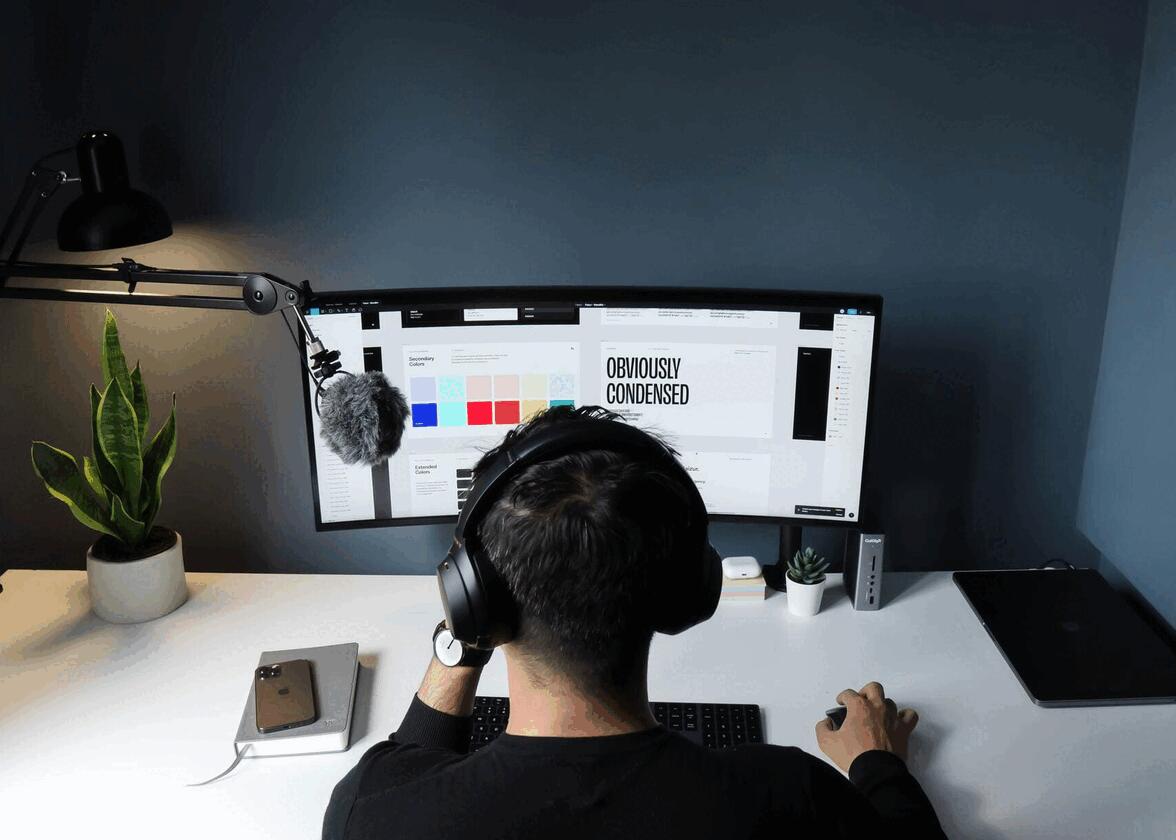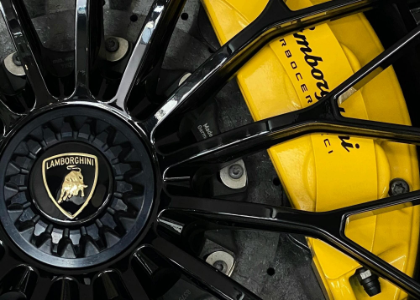Blog

Logo Designs We're Jealous of and How to Imitate Them
You know that your brand needs a logo, but if you're struggling to come up with something good, you may want to look to other logos for inspiration. There's a fine line between drawing elements from logos and copying. We'll look at some famous logos and discuss strategies for imitating without outright copying.
What Makes a Logo Design Good?
Not all logos are created equal.
You've likely noticed that some logos resonate with you and stick in your mind more than others. Let's dive into logo design in order to understand why some logos are so much better than others.
What Is a Logo?
A logo is a graphic representation of a brand. It uses images, words, or both to convey what the brand does and what it values. Logos get used on products, business cards, marketing emails, websites, and other marketing materials and sales collateral.
Parts of a Logo
There are three main parts of a logo.
Some logos will use all three elements, while others will only use one or two. The logotype, wordmark, or brand name is the name of the brand or an acronym or abbreviation.
The icon or mark is an image - either a picture or a symbol - representing the brand. Finally, if the brand has a slogan, it may also be included in the logo.
Types of Logos
There are five types of logos. A wordmark is the brand name printed in specific colors and fonts, like the Google logo. Letterforms use either an acronym or the first letter of a brand name, such as the M for Mcdonald’s.
The brand’s name and image are linked in an emblem-style logo.
A good example is the Warner Brothers logo. A pictorial mark is a logo made of an image. It's usually a simple image, like an outline or silhouette, and is easily recognizable. The Twitter logo is a great example because it's a literal recognizable image.
An abstract mark is also an image, but it conveys the brand in a shape that isn't instantly recognizable. The Pepsi logo is abstract. It doesn't represent an actual object but is easy to recognize.
Why Having a Good Logo Is Important
A good logo is essential to creating a coherent brand identity. Your logo will be on nearly everything associated with your brand, including the website, business cards, products, advertising, swag, and more. Your logo will come to represent your brand.
A good logo can stick with your customers and help you stand out from the competition. Your logo can also help with future graphic design for your brand as it can give you design ideas.
Conversely, not having a logo can be detrimental to your brand. Almost all businesses have a logo, so people expect it. If you don't have a logo, potential customers may wonder if you're legitimate and may have trouble respecting or trusting you as a business.
Aspects of a Good Logo Design
There are a few design tips to help you make sure you have a good logo design. You may want to work with graphic designers and other professional designers to make sure you get a quality logo.
The most important aspect of a good logo design is to keep it simple.
A logo should be easy for people to recognize and remember. You don't want to have too much text, too many colors, or an image that's too complicated. Sometimes straight lines, like horizontal lines and vertical lines, are enough to make a compelling image.
When starting the creative process, you may want to brainstorm images representing your brand. You should also consider color choices. Consider color meanings when looking through color palettes.
What Can Make a Logo Design Bad
Some elements can make a logo design bad. Keep some of these factors in mind as you enter the design process. You don't want a logo that's too busy or has too many colors. If using words, make sure the font is easy to read.
You also want to ensure that your logo looks great, whether it's very large or tiny. You need a logo that will look good on both a billboard and a business card.
Examples of Amazing Original Logos
Below are some of our favorite original designs from famous brands and newcomers.
I Love New York
What makes this logo great is that whether you have traveled to New York or not, you recognize the logo and know exactly where it has come from. In fact, this is a logo that performed so well it has been recreated and imitated numerous times.
It is simplistic in its color choice of black, white, and red. These contrasting colors also contribute to the logo being eye-catching and memorable.
The London Underground
Again, a logo with only a select few colors. Simple. A combination of words and shapes. Yet a logo that is known (and imitated) worldwide. The use of white space with this logo is impeccable as it resembles the tunnels in which the underground tubes run in.
FedEx
??
FedEx took their original company name, Federal Express, and shortened it into their newer catchier name, which is now recognizable to most. They then turned that name into their logo. They kept it short and sweet. They also stuck with two contrasting colors and a fun font, which is burned into our minds.
McDonald's
The golden arches may seem like a cliche, but it's an iconic logo for a reason. The simple color and image make up one of the most memorable logos of all time.
Even children recognize this logo, many before they even start to read. The logo does double duty as a letterform representing the M for McDonald's and two french fries.
Apple
Apple is a world-renowned company. In fact, if you google “apple”, the company comes up before the actual fruit does. Apple’s logo is as simplistic as it gets, yet it is known in the furthest corners of the globe. A black apple with a bite out of it.
How to Get Inspiration From Well-Known Logos Without Copying
Well-known logos can provide a wealth of inspiration, but you have to be careful. Because well-known logos are so easily recognizable, people will instantly think you're copying if your logo is too similar.
Instead, let's figure out how to learn from the best without directly copying.
Inspiration vs. Imitation
If you're going to use other logos to guide your design inspiration, you want to make sure you're not imitating. Not only does imitating make you look unoriginal, but it can also lead to a lawsuit.
You never want to copy an image or personal font. You also don't want to take a famous logo and change just a few of the elements to "make it your own." These are examples of imitation.
When you use inspiration to guide your design, you don't take anything from the actual design.
Instead, you take intangible aspects. For example, a design may use geometric figures. Instead of copying the exact figures, you may use different geometric figures.
You could also take inspiration from a mood, such as playfulness or a bold color scheme.
How You Can Imitate Logos
When imitating logos, you're walking a fine line. You need to hone in on the fundamental things you like about the logo instead of the logo itself. Focus on design choices, not the image. Another trick is to diversify your source materials. Instead of drawing inspiration from one logo, draw inspiration from many.
When you design your logo, don't have the source logo in front of you.
Make your sketches without having the logo as a reference right there. You might get tempted to copy it. Also, don't try to keep editing your image to make it look more like the logo you're imitating, embrace the differences.
You can also look at ‘fake’ logo designs for brands that have been made up. These can be looked at for inspiration that's less likely to look like copying.
If you still feel like your logo is too similar, try to change the context. Rearrange things or try to change the way elements interact. Try to make both subtle and drastic changes until your design is different enough from the original and you have put the core ideas into a new context.
Make use of the resources and tools you have at hand. There are plenty of logo design makers (just like this one) or graphic design tools to help you create the logo imitation you are looking for.
The Advantages of Imitating a Logo
The main advantage of imitating a logo is that you're going off something that you already know works. You don't have to reinvent the wheel, but you can refine it.
In fact, you can learn from the previous logos’ mistakes and make it better.
Logo imitation gives your design team a good starting point, meaning that they can expend less time and money on the entire logo design process.
If you're struggling to develop an idea, imitation can be an excellent way to help the creative process. After creating a few fake logo designs based on famous logos, you may be able to come up with something original yourself.
Risks and Disadvantages
You run a few risks when you imitate a logo. If it's too close to the original, your business won't come across as unique. This means that your brand could be mistaken for the original brand you based your logo on and vice versa.
Potential customers may not take you seriously. They may see your imitation as a lack of creativity and as an indicator of laziness.
Also, just because a logo design is right for a different brand doesn’t mean that it is right for your brand. It may give off the wrong impression or incorrect brand values and importance.
Copyright Infringement and Intellectual Property
When someone creates something, it's their intellectual property under copyright protection.
Whether you copy from an individual or a large company, you can find yourself in a copyright infringement lawsuit. Copyright infringement is a serious issue, so it's best to make sure your design is unique.
Parting Thoughts: Is Imitating Logos Worth It?
Imitating logos can be worth it if you have the right approach. Take an idea and improve it through your imitation.
Just be sure to make it different enough from the original that you don’t run into any trouble with the law.
Suppose you're looking for inspiration instead of copying or imitating so that you can learn the skills to create your own unique design eventually. In that case, imitation can be a helpful tool to create a great logo for your brand.
More tips and tricks on the blog


